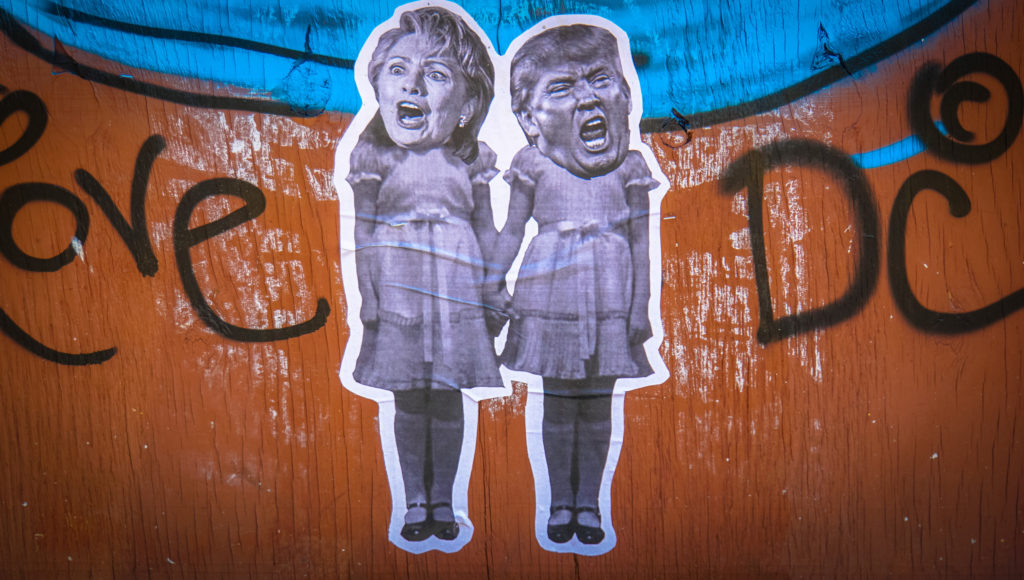
The only thing standing between us and the end of this seemingly endless presidential campaign is a handful of presidential debates. Since the 1988 race, debates between presidential candidates have been organized by the Commission on Presidential Debates (CPD). The CPD was formed to ensure “that presidential debates between the leading candidates be made a permanent part of the electoral process.”
The CPD employs two hurdles for participation: candidates must be on the ballots of enough states to have a mathematical chance of achieving at least 270 electoral college votes, and their average standing in five national polls must equal or exceed 15%. (The 15% cutoff was first used in 1980 by the League of Women Voters, allowing John Anderson to participate in the debates. The CPD formally adopted the same cutoff in 2000.)
These standards were driven in part by the Federal Election Commission’s requirement that organizations sponsoring such debates use “pre- existing, objective” criteria to choose participants. Using transparent and pre-established standards for inclusion in the presidential debates makes sense. But the standards currently employed by the CPD no longer do… and here’s why.
First, our country is more polarized than ever. In 2000, about 49% of the country was middle-of- the-road and therefore up for grabs. Today, that figure has dropped to 35%, making it much more difficult for mainstream third-party candidates to capture the 15% in polling that the CPD requires. To be comparable, the threshold should be closer to about 10%.[note]See the Pew Research Center’s in-depth report on how political polarization in the US has changed over time here. [/note]
Second, academic studies strongly suggest that presidential debates have very little (if any) impact on how people vote in the subsequent election.[note]See Tides of Consent: How Public Opinion Shapes American Politics by James A. Stimson (Cambridge University Press, 2004), and The Timeline of Presidential Elections: How Campaigns Do (And Do Not) Matter by Robert S. Erikson and Christopher Wlezien (Chicago University Press, 2012)[/note] In part, that’s because debates held late in the election cycle, after the majority of voters have sided with one candidate or another.
Confirmation bias – our tendency to attend to information that fits our pre-existing view of the world and downplay information that conflicts with that worldview – makes it unlikely that anything but the most egregious error will change the minds of those watching the debates. That is, people learn from debates but what they learn isn’t enough to change how they vote… at least not in the election immediately following the debate.
Debates do have one effect, however. Studies have shown that viewers gather new information from candidates during debates, especially those office seekers with whom they are unfamiliar. Because the general election presidential debates happen so late in the cycle, people are far more likely to be unfamiliar with third-party candidates than they are candidates of the two major parties.
In short, Americans on the left and right are further apart than ever, making the 15% polling target tougher – and perhaps impossible – for a third party candidate to achieve. And because debates serve to educate voters without changing the results of the impending election, using any polling target doesn’t make sense.
It’s no wonder that third party candidates feel as though they’re banging their heads on a door that’s been intentionally slammed shut in their faces.
How could the CPD improve the mechanism by which candidates for the debates are selected? A couple approaches come to mind, and they both meet the FEC requirement of being objective and transparent. They’re also commonsensical.
One option is that the CPD could adjust the polling threshold to account changes in the polarization of the country. Today, that means dropping the threshold to about 10 – 11%.
A second option is to ask the voting population directly which candidates should be invited to debate.
By either of these measures, it’s far likely that one of the third-party candidates – namely Gary Johnson – would be included in this seasons presidential debates.
The CPD says that,
The nonpartisan, voter education goal of the CPD’s debates is to afford the members of the public an opportunity to sharpen their views, in a focused debate format, of the leading candidates for President and Vice President of the United States.
The CPD’s approach to candidate selection should be driven by this goal. Regardless of whether Johnson (or Stein, or any other third-party candidate) meets the current thresholds for inclusion, if the CPD is genuinely interested in helping the public “sharpen their views,” it’s time for their debate selection process to change.
NOTES